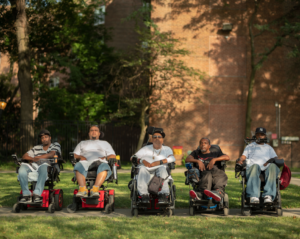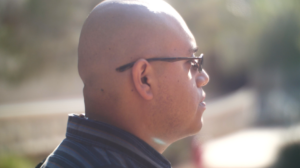
He’s My Brother Discussion Guide
At a glance
Film summary
Introduction
This guide is an invitation to dialogue. It is based on a belief in the power of human connection and designed for people who want to use He’s My Brother to engage family friends, classmates, colleagues, and communities. Conversations that center disability, learning, and identity can be difficult to begin and facilitate, but this guide is meant to support you in sustaining growth-oriented conversations.
The discussion prompts are intentionally crafted to help a wide range of audiences think more deeply about the topics in the film. Rather than attempting to address them all, choose one or two that best meet your needs and interests. And be sure to leave time to consider taking action. Planning next steps can help people leave the room feeling energized and optimistic, even in instances when conversations have been difficult and/or uncomfortable.
About the Author
Discussion Guide Author, Kate Moss Hurst, Deafblind Education Consultant, Texas Deafblind Outreach Project, Texas School for the Blind and Visually Impaired
Kate Moss Hurst is a certified teacher of the deaf and hard of hearing who has worked in the field of deafblind education for over 35 years. As a classroom teacher, she was introduced to her first students who were congenitally deafblind at Callier Center for Communication Disorders, University of Texas Health Sciences in Dallas. She has worked as a deafblind rehabilitation specialist for the state agency serving individuals who are deafblind. Since 1989, she has worked at Texas School for the Blind and Visually Impaired, Outreach Programs, as a family engagement coordinator and later as an education consultant with the Texas Deafblind Project. Her work with the Outreach Programs also included writing and editing a news magazine, developing educational materials and training for professionals and family members, developing websites about educational best practices in deafblind education, and online courses. Kate is currently retired, though she continues to work part-time in the field of deafblind education. She is co-author of Introduction to Sexuality Education for Individuals Who Are Deaf-Blind and Significantly Developmentally Delayed and Guidance for Planning Behavior Intervention for Children and Young Adults who are Deafblind or Have Visual and Multiple Impairments, along with a number of articles on deafblindness.
 Murders That Matter Delve Deeper
Murders That Matter Delve Deeper  Fire Through Dry Grass Discussion Guide
Fire Through Dry Grass Discussion Guide  unseen
unseen  How to Have an American Baby
How to Have an American Baby